A Comprehensive Guide to Hypersonic Weapons and Interceptors
IRIA Staff - August 30, 2023
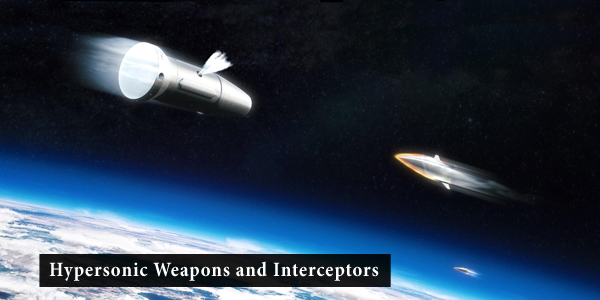
In a world defined by rapid technological advancements, the military landscape has witnessed a monumental shift with the emergence of hypersonic systems. This groundbreaking development in modern warfare has transformed the way nations project power, defend their interests, and reshape global security dynamics.
With speeds exceeding Mach 5, these weapons have captured the attention of military strategists, policymakers, and experts worldwide. This guide delves into the realm of hypersonic weapons, exploring their remarkable capabilities, geopolitical implications, and the cutting-edge technologies driving modern defense strategies.
With Russia and China leading the hypersonic weapons race, Iran and North Korea have also declared to have developed a long-range hypersonic missile, igniting a fierce race and compounding the concerns of Western powers. The increasing pace of hypersonic weapons development has given rise to parallel research that focuses on developing hypersonic defense systems.
The threat of hypersonic weapons remained one of the main concerns during the landmark meeting between the leaders of the U.S., South Korea, and Japan at Camp David, United States, in August 2023. During the meeting, U.S. President Joe Biden, and Japanese Prime Minister Fumio Kishida agreed to collaborate on developing hypersonic weapons. Tokyo and Washington are aiming to deploy hypersonic weapons by 2030. The reports also suggest that the two countries also forged accords on developing a joint hypersonic missile interceptor.
What is a Hypersonic Missile and how does it work?
Hypersonic weapons are considered the next generation of weapons aimed at targeting adversaries with increased precision and without giving conventional interceptors the time to react. Several countries have been involved in the process of developing their hypersonic weapons as well as equipping their strategic allies with technologies that can reach speeds above Mach 5 (five times the speed of sound).
Contrary to a conventional ballistic missile, hypersonic missiles do not follow a trajectory but instead follow a route that makes it faster, more reliable, and easier to maneuver as well as far more accurate in finding the target as small as six inches. Hypersonic missiles’ parallel glider trajectory also allows them to follow a straight path to avoid entering the ground radar’s detection zone until it is already too close to the target.
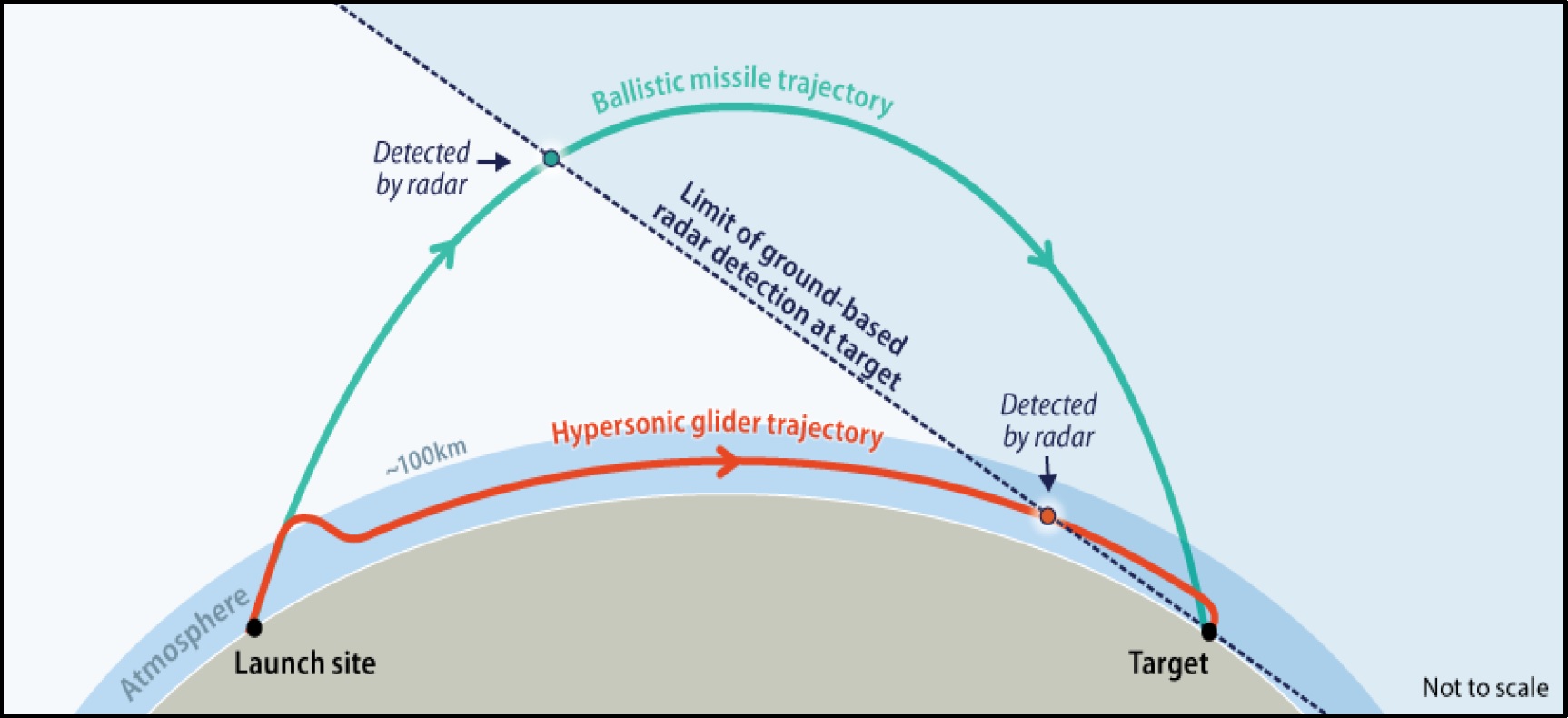 Terrestrial-Based Detection of Ballistic Missiles versus Hypersonic Glide Vehicles. (Image Credit: Hypersonic Weapons: Background and Issues for Congress)
Terrestrial-Based Detection of Ballistic Missiles versus Hypersonic Glide Vehicles. (Image Credit: Hypersonic Weapons: Background and Issues for Congress)
Hypersonic weapons are mainly categorized into two classes:
1. Hypersonic Glide Vehicles: Launched from a rocket before attaining hypersonic speeds to find and hit its target.
2. Hypersonic Cruise Missile: Powered by high-speed engine and launches itself from surface/air.
Achieving high speeds during a flight makes the weapon extremely lethal and undetectable, and also makes it harder to maneuver the missile to find its target. Currently, China and Russia possess proven arsenals of hypersonic missiles.
China’s DongFeng-17 and Russia’s Objekt 4202 are exemplars of functional hypersonic arsenals. Russia deployed hypersonic missiles against Ukraine during its 2022-23 invasion. The United States, Iran, and North Korea are also making significant progress in advancing their hypersonic missile programs.
Intercepting a Hypersonic Missile
The high speed and excellent navigation and maneuvering capabilities of the hypersonic glide vehicles (HGVs) and hypersonic cruise missiles (HCMs) make it difficult to detect and track their trajectory, and consequently to intercept them.
During his testimony in front of the U.S. Senate’s Armed Services Subcommittee on Strategic Forces, the commander of the United States Northern Command (USNC) and head of the North American Aerospace Defense Command (NORAD) General Glen D. VanHerck said that “Hypersonic weapons are extremely difficult to detect and counter given the weapons’ speed and maneuverability, low flight paths and unpredictable trajectories.”
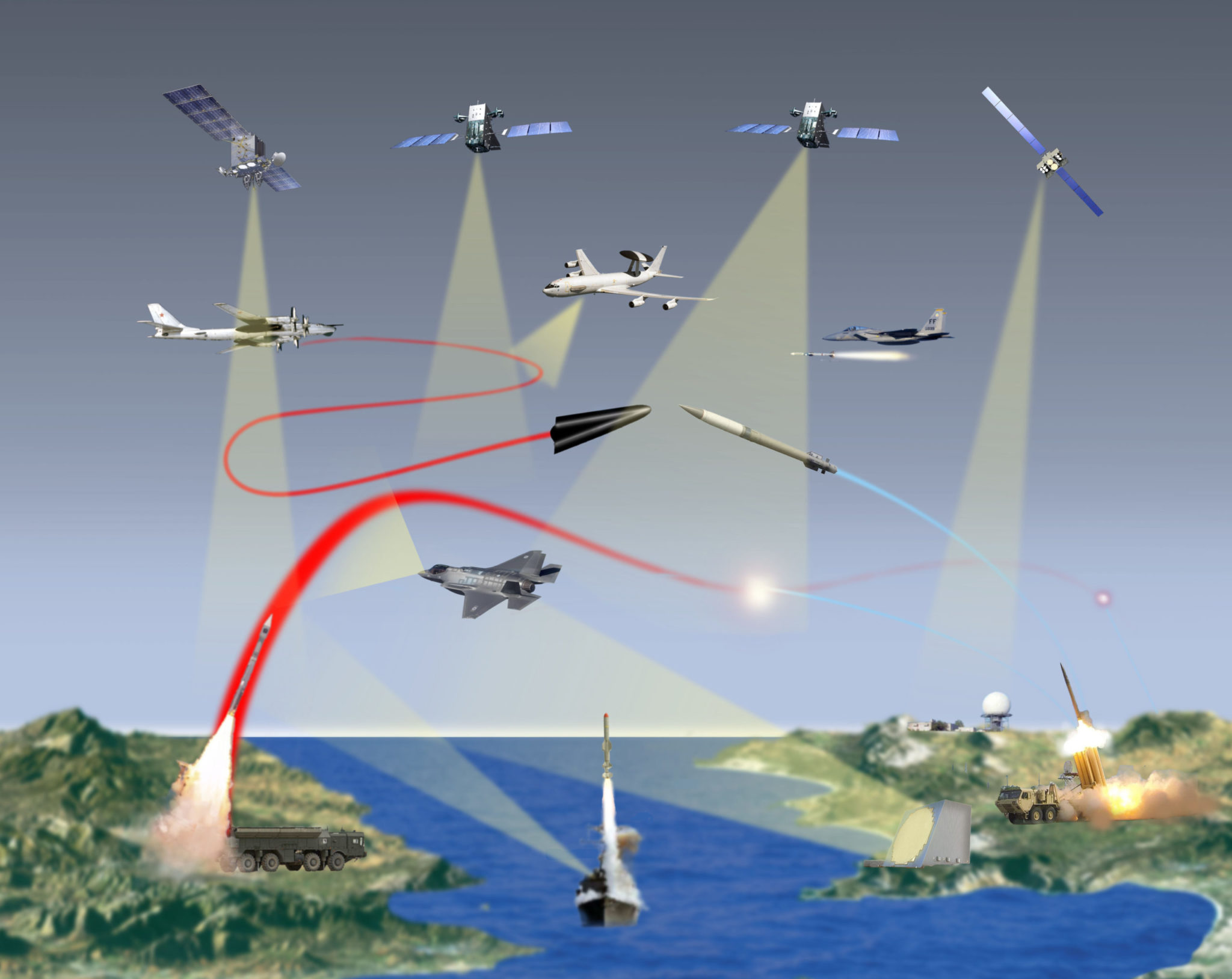 U.S. satellites and aircraft monitor, transmit, and share intelligence in this conceptual illustration of hypersonic missile defense. (Image Credit: DOD, USAF, USN, Northrop Grumman, Lockheed Martin)
U.S. satellites and aircraft monitor, transmit, and share intelligence in this conceptual illustration of hypersonic missile defense. (Image Credit: DOD, USAF, USN, Northrop Grumman, Lockheed Martin)
The U.S. currently uses two types of ballistic missile interceptor systems, the SM-3 systems and the THAAD. Both systems rely on either ground-based radar systems to acquire information about the incoming missile trajectory or satellite-based information to determine the path and then intercept the incoming threat.
Since a hypersonic missile uses a low path and maneuverable trajectory to deceive conventional radars and projectile detecting systems, tracking such missiles through satellite systems and keeping up with the speed of a projectile moving at hypersonic speeds is extremely difficult.
However, the U.S. Space Force is in collaboration with the U.S. Missile Defense Agency (MDA) to develop a satellite system to track hypersonic ballistic missiles from space.
Focused on the approach of hitting a bullet with a bullet, MDA is working on glide phase interceptors to use a hypersonic system to take out a hypersonic missile as they believe that the weapon is most vulnerable in the glide phase of the flight. The counter-hypersonic system may be challenging but is already in development.
Currently, there are only a handful of projects focusing on developing hypersonic interceptors, but the much-hyped hypersonic weapons also remain in the development phase and have not matured to perfection. Though the realm of hypersonic missile technology has emerged as a substantial threat, it is noteworthy that the evolution of both offensive and defensive capabilities for these weapons is unfolding in tandem.
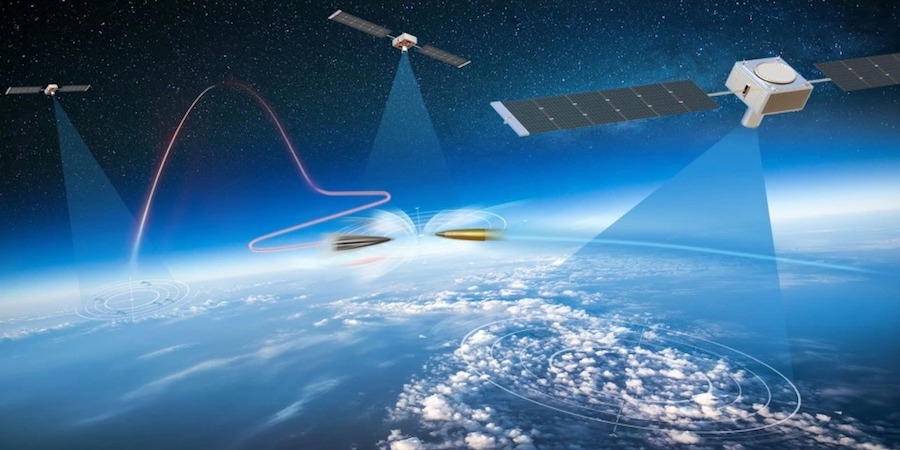 Artist's rendering of Hypersonic weapons that can be maneuvered during the entire flight. (Image Credit: Raytheon Graphics)
Artist's rendering of Hypersonic weapons that can be maneuvered during the entire flight. (Image Credit: Raytheon Graphics)
In May 2023, Ukraine claimed to use the U.S.-supplied Patriot battery to shoot down a Russian-owned Kinzhal “hypersonic” missile. This incident garnered widespread attention and cast a spotlight on the efficacy of hypersonic missiles. This episode underscored the possibility of countering these high-speed projectiles using conventional defense systems, prompting a reevaluation of the perceived invincibility of hypersonic weaponry.
Hypersonic Threats and Advancing Interceptor Technologies
Russia unquestionably possesses the capacity for a hypersonic strike, with its Kinzhal missiles achieving remarkable speeds. However, the real threat of a hypersonic missile lies not merely in its speed, but its unpredictable trajectory. An effective hypersonic missile interceptor requires an end-to-end missile defense system, surpassing reliance on traditional methods and ground-based radar. This system must encompass real-time trajectory tracking along with detection.
Several defense manufacturers are currently spearheading the research of hypersonic missile interceptors. Still in its initial phases, the hypersonic interceptor development is rapidly gaining momentum as a growing number of participants enter the race. Here is a list of the most promising hypersonic missile interceptor projects currently under development.
The Glide Phase Interceptor Program
Makers of the SM-3 ballistic missile defense system, Raytheon Technologies, stepped up the missile interceptor technology to develop a Glide Phase Interceptor (GPI). The program is funded by MDA and aims to upgrade the existing Aegis weapon system to develop a hypersonic missile defense system. The GPI would be effective against the boost-glide hypersonic vehicles. Such hypersonic weapons use hypersonic boost vehicles in the initial phase of their flight until they reach an appropriate altitude to launch the glide vehicle that makes its way to the final target.
The GPI program aims to develop an interceptor system that detects and neutralizes the threat in its initial phase as the hypersonic glide vehicle is launched. Currently, Raytheon and Northrop Grumman are leading the research in this area.
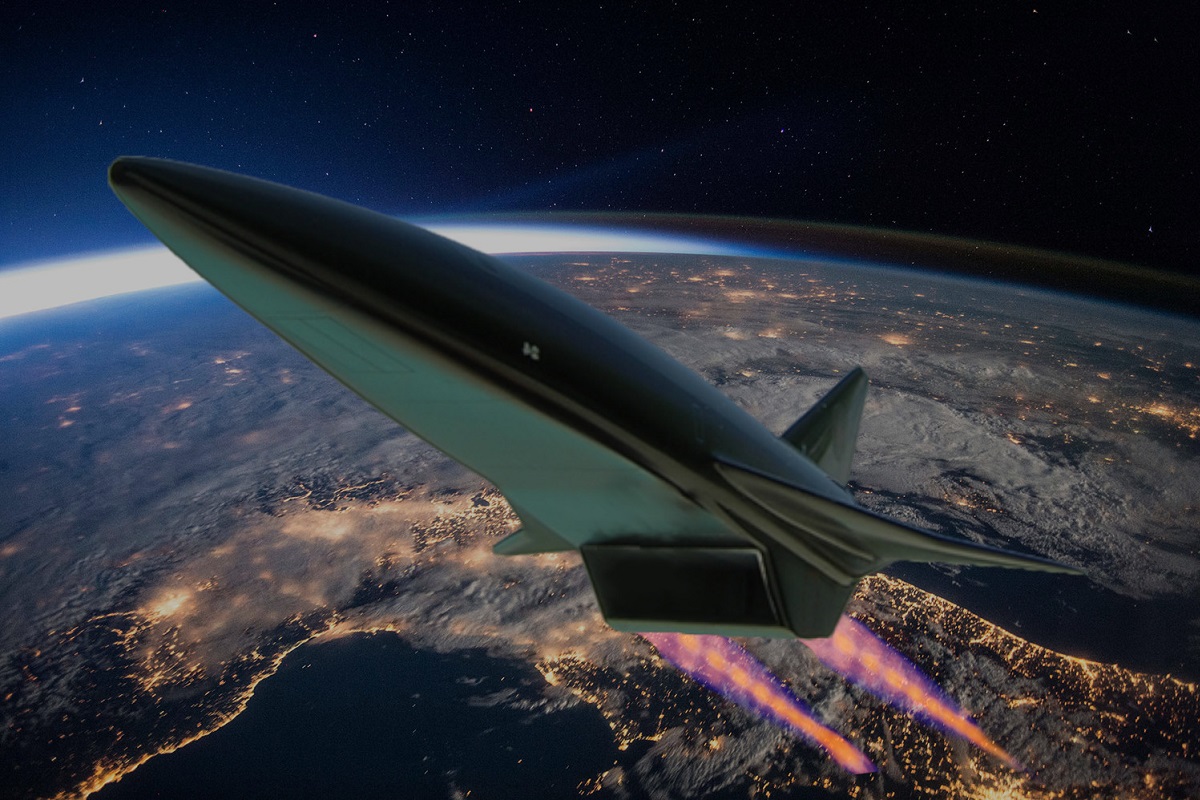 Tupolev Tu-2000 in space in a modified image by Jeremy LeFevre. (Image Credit: Alex Panchenko/NASA)
Tupolev Tu-2000 in space in a modified image by Jeremy LeFevre. (Image Credit: Alex Panchenko/NASA)
According to Raytheon, “GPI will intercept hypersonic weapons in the glide phase of flight, which occurs once a missile has re-entered Earth’s atmosphere and is maneuvering toward its target. The initial development phase will focus on reducing technical risk, rapidly developing technology, and demonstrating the ability to intercept a hypersonic threat.”
By the end of 2022, Raytheon and Northrop Grumman announced that they made significant progress by concluding the system requirements review for the program and developing a working prototype for their Glide Phase Interceptor.
Recently, Japan also joined the GPI program of the United States. Tokyo would finance the program and would be able to attain the system after development. Japan has already collaborated with the U.S. during the development of the SM-3 Block IIA missile defense system. Considering that the GPI program is an upgrade of the same missile defense system, it was only natural for Tokyo to be a part of it.
Sky Sonic Interceptor
Israel-based defense technology company, Rafael Advanced Defense Systems, announced that it has developed the world’s hypersonic missile interceptor named Sky Sonic. The system’s first working prototype was officially unveiled at the Paris Air Show 2023. The Sky Sonic is a two-stage interceptor system that has been under development for the last three years.
To date, the company has not elaborated on the working dynamics of the Sky Sonic defense system. However, it says that the Sky Sonic uses a large booster to get the second-stage kill vehicle close to the target. The kill vehicle will then maneuver and close in on the target such as glide vehicles or cruise missiles.
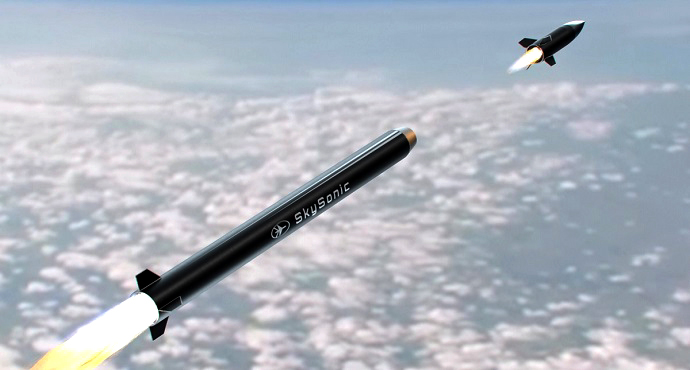 Rafael's anti-hypersonic missile system "Sky Sonic" has a range of 20 to 70 km. (Image Credit: Twitter/Rafael)
Rafael's anti-hypersonic missile system "Sky Sonic" has a range of 20 to 70 km. (Image Credit: Twitter/Rafael)
Sky Sonic is the only hypersonic interceptor that claims to work for both hypersonic glide vehicles and hypersonic cruise missiles. According to Rafael, Sky Sonic is a multi-stage interceptor that uses a hit-to-kill system, which means it destroys the target by colliding with it at high speed. Sky Sonic is designed with an open architecture that allows maximum flexibility and integration with other systems. So far, no timeline has been provided by Rafael about the completion of the project and its availability for deployment.
Given Rafael’s track record of developing highly successful and technologically advanced missile defense systems like the Iron Dome and David’s Sling, experts are cautious about the extensive attention given to the development and production of the Sky Sonic interceptor. This is because Rafael’s claims to have developed the working prototype of Sky Sonic came shortly after Iran declared its success in developing a “hypersonic” missile. The efficacy of both remains in question to date.
AQUILA Interceptor
Europe has also joined the race to develop its hypersonic missile defense systems. Hypersonic Defense Interceptor Study (HYDIS) is a project funded by the European Commission’s European Defense Fund (EDF) that aims to conduct research and development for ground and naval-launched hypersonic-missile interceptors.
The project has awarded a contract to the European missile manufacturer MBDA consortium for the development of the AQUILA Interceptor, an upgraded version of the ASTER anti-missile interceptor that can detect and intercept hypersonic missiles. The project is currently in conceptual stages and internal research. MBDA unveiled that the company has been working on the project for the last five years. The testing and development phase of the project would involve more than 19 industries from all over Europe and more than 30 subcontractors from 14 European countries.
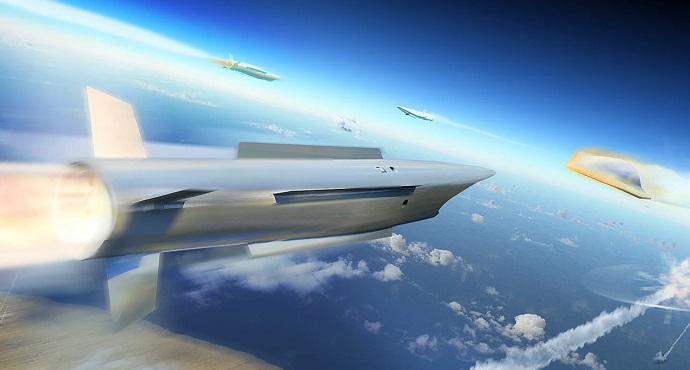 Artist rendering of Timely Warning and Interception with Space-based TheatER surveillance project. (Image Credit: MBDA/Mourad Cherfi)
Artist rendering of Timely Warning and Interception with Space-based TheatER surveillance project. (Image Credit: MBDA/Mourad Cherfi)
The AQUILA project shares some similarities with the U.S.’s GPI project. However, the head of MBDA’s counter-hypersonic programs Lionel Mazenq differentiated the two programs by saying that “There is nothing like this [AQUILA] in the US or Israel.” He said that the Glide Phase Interceptor (GPI) program has defined a “similar analysis of the situation” about shaping future endo-atmospheric capabilities but the AQUILA hypersonic interceptor would have larger implications.
Syed Bahadur Abbas
ALSO READ:
Regions
Issues

















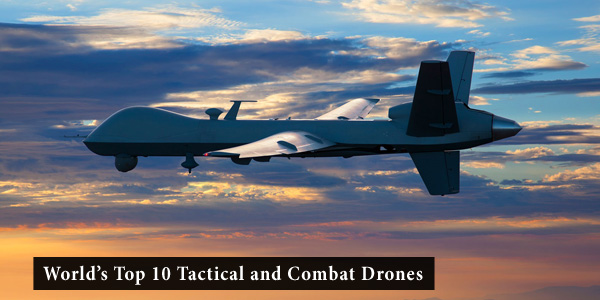 World’s Top 10 Tactical and Combat Drones
World’s Top 10 Tactical and Combat Drones Hypersonic and DEWs – A New Arms Race
Hypersonic and DEWs – A New Arms Race







